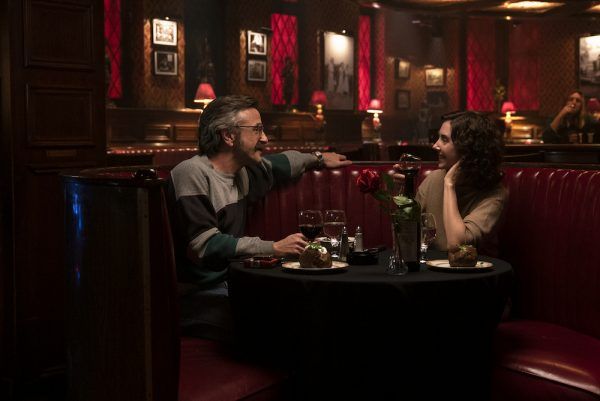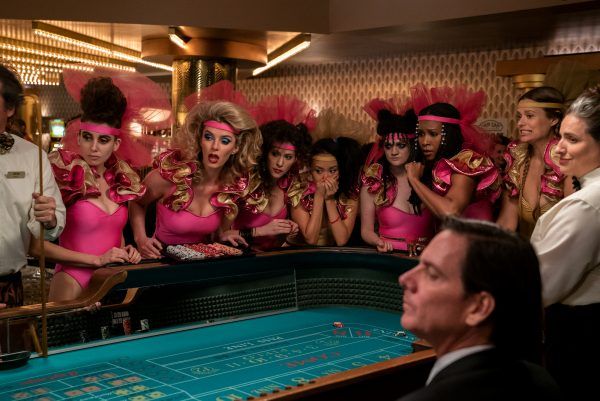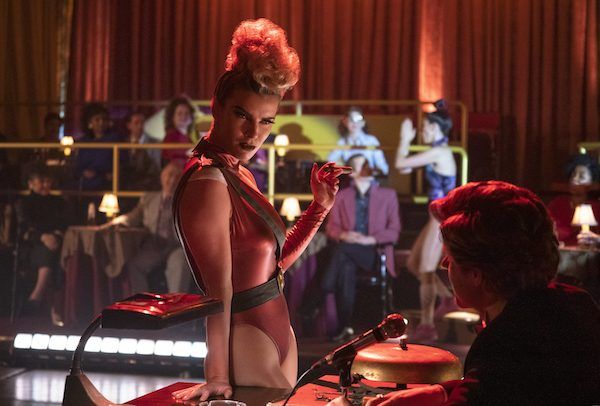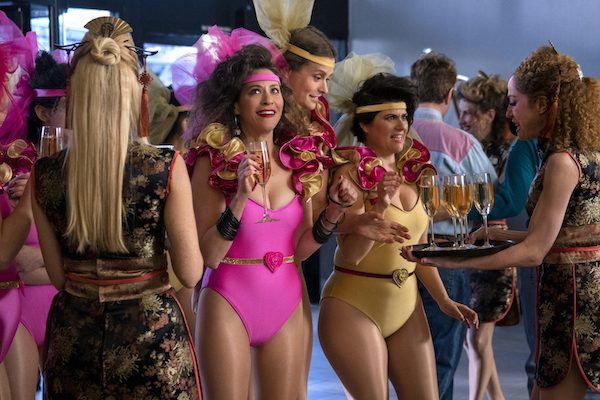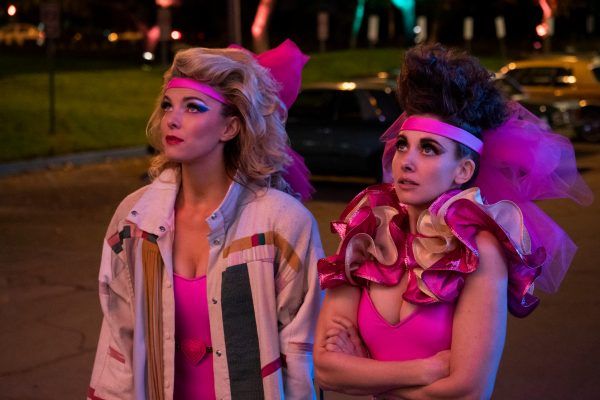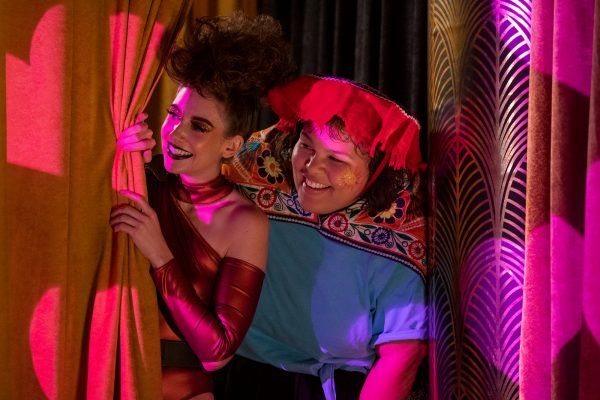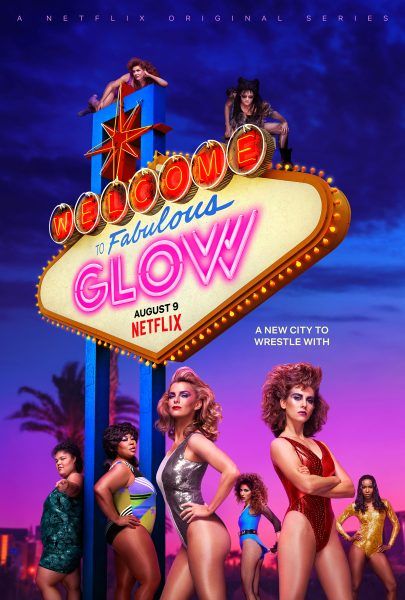"This is a show about women’s bodies," Alison Brie told me in 2017, just prior to GLOW's debut on Netflix, back when it was just Liz Flahive and Carly Mensch's comedy about a cult pro-wrestling company from the 1980s and before anyone knew it would become the best original series on Netflix. This has never been truer—both the thing about the bodies and the thing about it being the best—than in the series' fantastic third season, which serves as the literal and metaphorical breakdown that comes with throwing your body at a mat for two seasons straight.
There's a sense of contradiction runs wild throughout GLOW season 3 from the very first moments. The very first scene, actually, which sees Brie's Ruth Wilder and Betty Gilpin's Debbie Egan in full Zoya the Destroyer and Liberty Belle regalia on public access TV to promote the Gorgeous Ladies of Wrestling, an interview that coincides with...the tragic 1986 launch of the U.S. Challenger. Ruth nailing her over-the-top anti-American Zoya schtick into the camera while one of the worst tragedies in U.S. history plays out behind her is such a deliciously dark way to kick off a season that it sets the overall theme in neon lights from the jump. Pageantry vs. tragedy. Showbiz vs. your own biz. The heightened world of pro wrestling vs. the ground-level trials and tribulations of, well, the actual world.
What more toxic place to try and live artificial lives than Las Vegas, probably the most artificial place on Earth? The Gorgeous Ladies of Wrestling have become entrenched in the fictional Fan-Tan Casino, putting on sold-out shows in a season that seems to keep getting extended. Surprisingly, this lends an almost locked-house horror vibe to the whole thing; it's like The Shining but with roughly 1000 times the amount of sequins. Trapped in a neverending Sin City fever dream, they're forced to either succumb to boredom and vice, deal with each other, or deal with their own shit, each option more terrifying than the last.
Debbie, for instance, has to face the fact that the 300 miles between L.A. and Vegas feels like 3,000 when a young son is being raised without her. Separated by just a small hotel hallway, Ruth and Sam Sylvia (Marc Maron) have to confront the odd attraction burgeoning between them. (I was very concerned about this storyline when seeds were planted in season 2, but the show handles it deftly in all its typical aching humanity.) Arthie Premkumar (Sunita Mani) has to close-quarters navigate her first romantic relationship with another woman, Yolanda Rives (Shakira Barrera), a beautiful little subplot about the contradiction of a person who gets grappled around a ring for a living but is tentative to be touched outside of it.
This new, introspective focus brings out some truly great performances from all involved. Gilpin was nominated for an Emmy with GLOW's first two seasons and here's to hoping third time's the charm. There's a scene in episode 2, "Hot Tub Club", where Debbie finds out over the phone that her son took his first steps, and director Mark A. Burley keeps the camera right on her as the news crumbles everything but Debbie's voice. Similarly soul-crushing is Kia Stevens as Tammé Dawson, GLOW's low-key MVP since season 1. (If you told me in 2009 that Awesome Kong would 100% deserve an Emmy for a Netflix show I probably would not believe you and also probably not know what Netflix is.) Tammé's "Welfare Queen" is suffering the real-life physical trauma of lifting a woman above her head every night—which the show depicts in a montage of the spot over and over and over again, with a little slower movement and a lot more post-match pill-and-wine combo each time—and Stevens perfectly captures the face of a person who needs to do a job their body won't let them do.
This isn't to say GLOW season 3 is all a downer. It's still a spandex-clad blast-and-a-half, and although nothing quite reaches the surreal heights of last season's "The Good Twin", there is a downright delightful episode where every one of the G.L.O.W. grapplers switches roles for a night. (Sam's deadpan-as-hell "fuck, I feel like I'm on acid" is a line that pretty much only Marc Maron could make funny.) But the fun of season 3 is an exhausted fun, the performative fun of a celebrity on a 6 A.M. talk show. Even the sex—which GLOW has a lot, of all kinds, shapes, and colors with a refreshing amount of dong to boot—is something to pass the time. One of the funniest bits of the season sees Debbie bring a juggler from the casino up to her room then forget he's there. "He'll leave when he's hungry," she says.
If the season does have a downside, it's that the writing team tries valiantly to give everyone in the cast a story, which means a good number of important beats fall flat for lack of time. A B-plot involving gambling debt that feels like it's about to go full Joe Pesci in Casino is revolved over roughly two scenes. There's also a truly horrific confession about a character's backstory that should be a nuclear-level reveal, but it comes and goes so quickly it feels more like a bad dream. Even Geena Davis, who is a shining beacon of light and genuinely hilarious whenever she pops up, doesn't serve much a role here.
The most consequential side-plot is Bash Howard's (Chris Lowell) descent into wrestling promotion dictator, spurred by his ongoing struggle with his own sexuality. Of course, even that involves a character falling apart in a match against himself. Everyone is falling apart here, physically, mentally, pretty much everywhere but under the ring lights. GLOW season 3 is a show about women's bodies as it's always been a show about women's bodies, but here the beauty seems to lie how far they'll bend before they break.
Rating: ★★★★★ Excellent
All nine episodes of GLOW season 3 hit Netflix on August 9th.


